Abhik Biswas, Chief Technology Officer

Differently-abled workers have proven themselves as valuable assets to their respective employers for years. However, it’s only been in recent years that evolving technology has delivered advanced tools and resources that have allowed these workers to maximize their potential.
Assistive technology refers to any device or tool that helps people with disabilities or special needs perform tasks that might otherwise be difficult or impossible without assistance. Assistive Technology tools are beneficial to businesses and they help increase productivity and accessibility while improving overall efficiency. In this article, we’ll discuss some of the most helpful assistive technology tools for the differently-abled workforce and how they can help businesses achieve their goals.
Tools of the Trade
Screen Readers and Magnifiers: crucial tools for individuals with visual impairments. These tools convert digital text into synthesized speech and magnify on-screen text and graphics. Screen readers enable visually impaired employees to navigate their computers, read emails, and use software programs. Magnifiers can help employees with low vision see small print and details.
Voice Recognition Software: enables employees to control their computers and perform tasks through spoken commands. This tool is beneficial for people with physical disabilities, such as limited mobility or dexterity, or those who are visually impaired. With voice recognition software, users can dictate text, open applications, and browse the internet hands-free.
Text-to-Speech and Speech-to-Text: useful for employees who struggle with reading, writing, or typing. Text-to-speech converts written text into synthesized speech, allowing users to listen to documents and emails. Speech-to-text converts spoken words into text, enabling users to dictate their thoughts, messages, and emails. These tools are especially helpful for employees with learning disabilities or dyslexia.
Communication Devices: allow employees with speech impairments to communicate more effectively. These tools range from simple picture boards to advanced speech-generating devices. Communication devices can also be useful for employees with cognitive impairments who may have difficulty expressing themselves or understanding verbal instructions.
Ergonomic Tools: help prevent repetitive strain injuries (RSI) and other musculoskeletal disorders (MSD). Ergonomic tools include specialized keyboards, mice, and chairs that are designed to reduce strain and improve posture. Providing ergonomic tools to employees can increase their comfort, productivity, and overall job satisfaction.
Braille Displays: allow visually impaired employees to read and write in braille. These devices use tactile pins to display braille characters that users can read with their fingertips. Braille displays can be connected to computers, tablets, or smartphones, enabling users to read and respond to emails, text messages, and other digital content.
Electronic Aids to Daily Living: help people with disabilities to control their work environment. These devices can be used to turn on lights, adjust temperature, and control other electronic devices. These tools are especially helpful for employees with physical disabilities who may have difficulty reaching or manipulating objects.
Beneficial Technology
Assistive technology can help businesses to create more inclusive and accessible workplaces. By providing employees with the tools they need to overcome their disabilities and perform their job tasks, businesses can increase productivity, reduce turnover, and foster a more diverse and inclusive workplace culture. Assistive technology tools can also align with businesses and how they achieve their goals in several ways:
- Increased Productivity: assistive technology tools can help employees with disabilities to perform their tasks more efficiently and effectively, leading to increased productivity. For example, a screen reader can help a visually impaired employee read and respond to emails faster, while voice recognition software can help an employee with limited mobility to navigate their computer and complete tasks more quickly.
- Improved Accessibility: assistive technology tools can also improve accessibility for employees with disabilities, making it easier for them to access information, communicate with colleagues, and participate in meetings and training sessions. By creating a more accessible workplace, businesses can attract and retain talented employees with disabilities, who might otherwise be unable to work for them.
- Better Compliance: many businesses are required by law to provide reasonable accommodation for employees with disabilities. Assistive technology tools can help businesses comply with disability-related legislation, such as the Americans with Disabilities Act (ADA) in the United States. By providing assistive technology tools to employees with disabilities, businesses can demonstrate their commitment to inclusivity and avoid legal issues.
- Enhanced Reputation: by using assistive technology tools and creating an accessible workplace, businesses can enhance their reputation and attract customers and clients who value diversity and inclusion. Additionally, businesses that prioritize accessibility and inclusivity can improve their relationships with employees, customers, and stakeholders, leading to increased loyalty and brand recognition.
Summary
In summary, assistive technology can help businesses achieve their goals by increasing productivity, improving accessibility, promoting compliance, and enhancing their reputation. By investing in assistive technology and creating an inclusive workplace, businesses can benefit from a more diverse and engaged workforce, as well as a more positive public image.
I’ve worked with many businesses that have differently-abled employees and I’ve seen that when these businesses provide assistive technology tools, they are also providing opportunities that directly impact a company’s growth and success in positive ways. I encourage all businesses to research the benefits of assistive technology tools and provide them to employees who need them. Doing so ensures long-term success for the differently-abled workforce and businesses alike.
Abhik Biswas is the Chief Technology Officer of Prakat Solutions, a published author, and an official member of the Forbes Technology Council.






